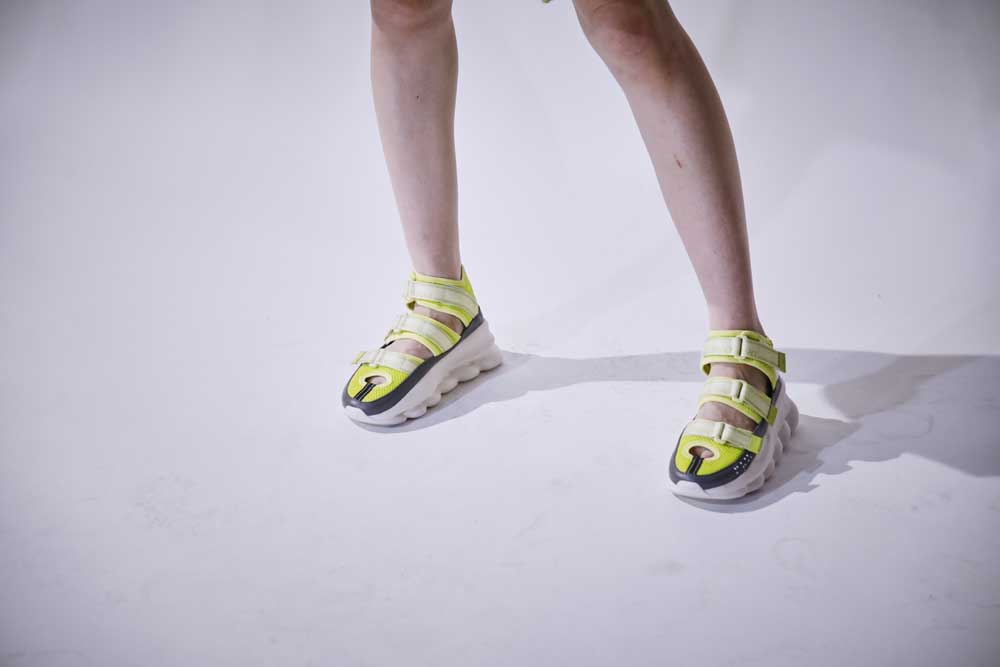The season of peak sneaker silliness
Published 12:00 am Tuesday, November 6, 2018

- Versace sneakers. As marketing executives the style world over have become convinced that every single brand has to have a sneaker in its footwear arsenal, and the pressure is on to up the ante with each new design the form has begun to flirt with being a parody of itself. (Tony Cenicola/The New York Times)
In January 2014, Karl Lagerfeld held a couture show set in a fictional Cambon Club (like the Cotton Club, but not), complete with an orchestra and grand staircase, down which his models wore custom sneakers.
Sixty-four different sneakers, with approximately 30 hours of handwork in each, courtesy of the couture shoemaker Massaro. Designers flirted with sneakers before, but because this was Lagerfeld, who does nothing halfway, and because this was couture, the choice was taken as a major cultural signifier.
It was hailed as a breakthrough. Comfort for all! A small step for footwear, a huge step for womankind!
Four and a half years later, the fashion sneaker phenomenon has reached absurdity. As marketing executives have become convinced every brand has to have a sneaker in its footwear arsenal, and the pressure is on to up the ante with each new design.
During recent runway shows, there were sneakers at Versace: on a chain link rubber sole, either boatlike in size or reduced to Velcro sandal straps, like a cross between Chacos and a rapper necklace. Sneakers at Cavalli: giant, silver, with spaceship bottoms. Valentino made sneakers: nurselike, with detachable feathers. So did Coach (metallic, with a loafer fringe), Tory Burch (canvas, with contrast laces and soles) and Escada, for its New York runway debut: candy-colored high-tops with quilted hearts on the ankle, seemingly sourced from a pick ‘n’ mix shop.
It didn’t stop there. Jimmy Choo unveiled the Diamond sneaker, with the “silhouette of a vintage racing shoe, superimposed into a Diamond-soled footprint,” created using a plastic mold that encloses the sole, all of it adorned with Swarovski crystals.
Some are great. Many of them look like Frankenstein monsters. They don’t free the wearer to take flight.
They also cost an awful lot — $580 for Gucci; $895 for Balenciaga’s Triple S; $1,090 for Louis Vuitton’s Archlight, all among the best sellers of the sector.
Rati Levesque, chief merchant of luxury resale site TheRealReal.com, said that women’s fashion sneaker sales are up 35 percent year on year. Beth Goldstein, fashion footwear analyst for the NPD Group, said designer sneakers are the No. 1 growth area in footwear for men and women.
Have we reached peak sneaker ridiculousness?
“I have a bet … that we are at the top of the trend and the pendulum is about to swing back,” said Neil Clifford, the chief executive of Kurt Geiger Ltd., which owns four shoe brands. “In every merchandising meeting we are asking ourselves: ‘Do we have enough sneakers? Should we buy more sneakers?’ But things change, and they always change quicker than you think.”
It took a while to get to this point. Prada introduced its first sneaker in 1996. Adidas brought on Yohji Yamamoto and Jeremy Scott as collaborators in 2002. Lanvin introduced its sneaker in 2005, the same year Vuitton enlisted Kanye West to help the brand with a sneaker. The force behind this is the rise of streetwear and comfort dressing. As the world get increasingly casual, so, too, the footwear. Now we are in a situation where the sneaker has become removed from its original purpose, it may be deflating. When designers are making a sneaker because they think they have to, it’s time to stop.







